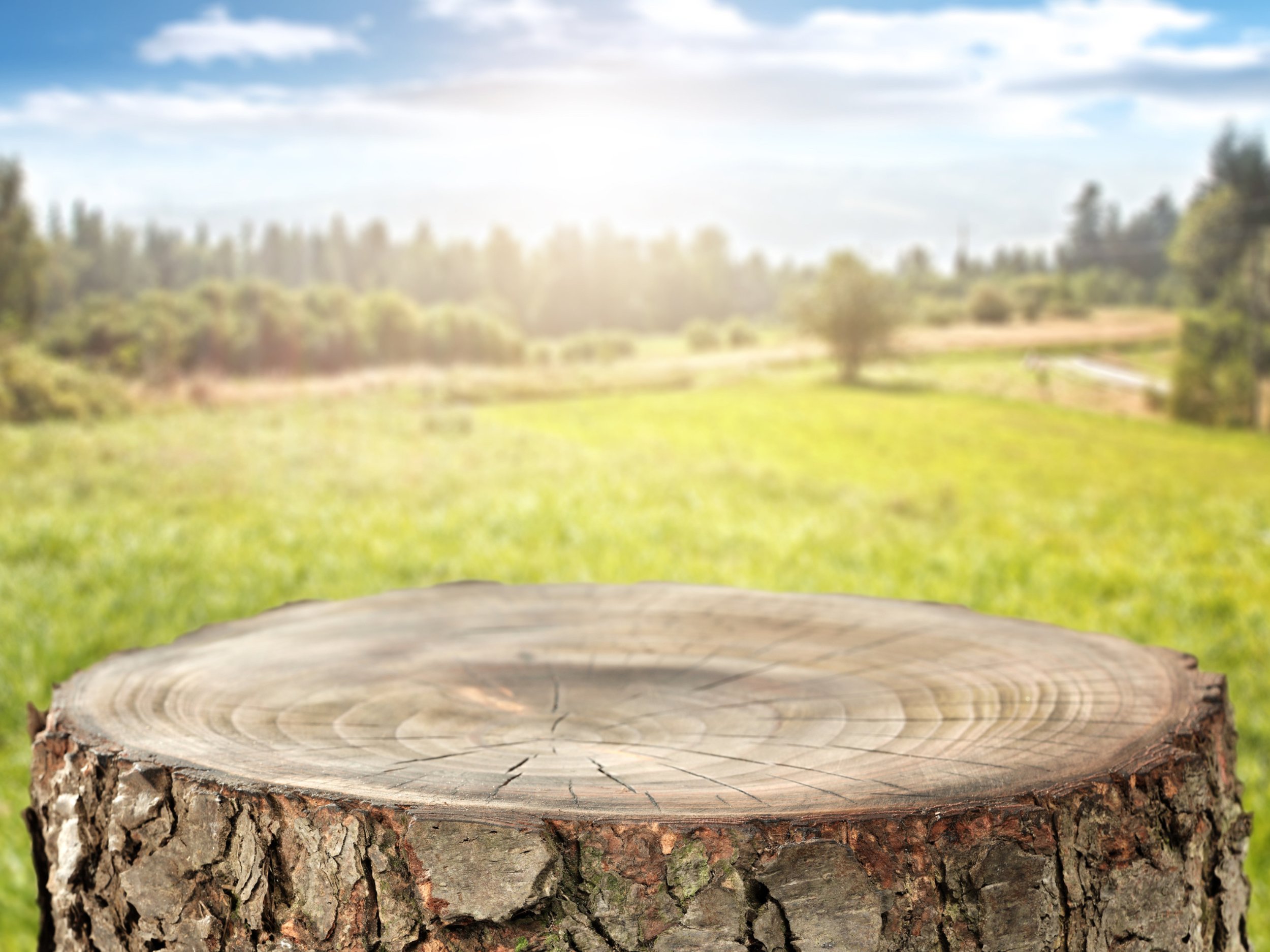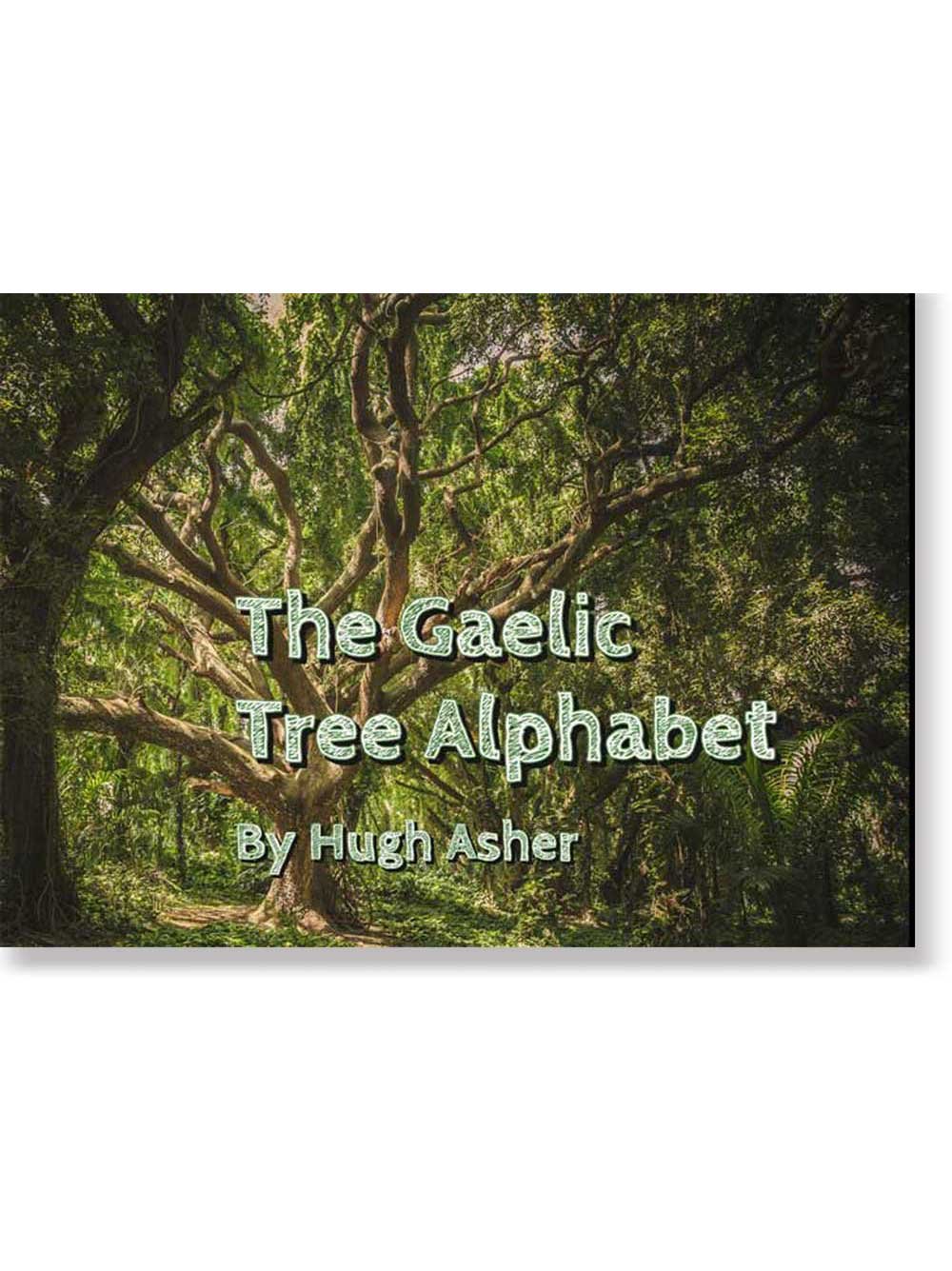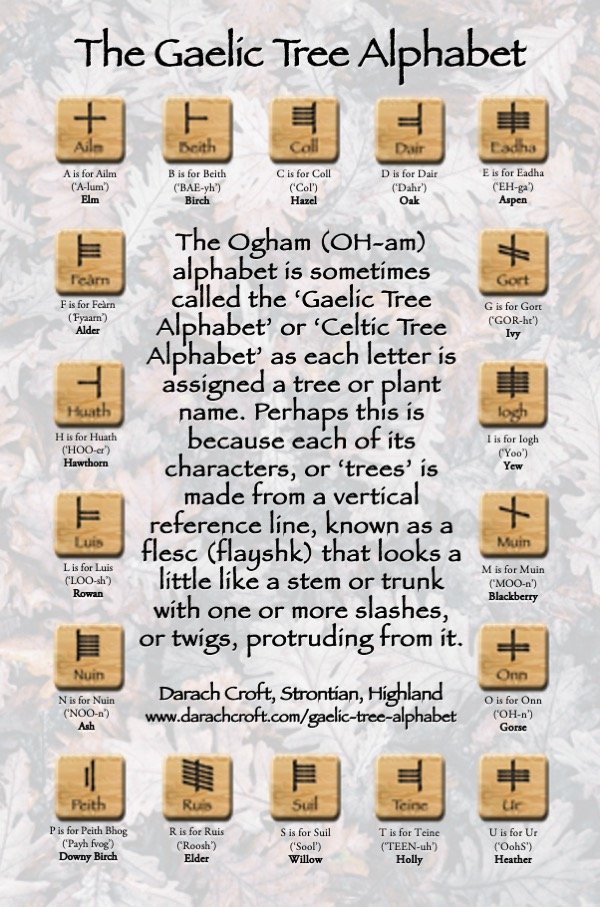Decoding Nature's Secrets: What Tree Rings Can Teach Us
8th July 2023
In the woods and forests, trees stand as silent witnesses to the passage of time. For centuries, humanity has sought to decipher these enigmatic stories written within the intricate patterns of their trunks. Thanks to the study of tree rings, or dendrochronology, we can now gain invaluable insights into the lives of these botanical giants and the environments they inhabit. Let us embark on a journey through time and delve into what we can learn about trees from their rings.

What Are Tree Rings?
Tree rings, visible as concentric circles when a tree trunk is cross-sectioned, hold a wealth of information waiting to be deciphered. Each ring represents a year of the tree's life, serving as a record of its growth and the conditions it experienced. By carefully analysing these rings, scientists (dendrochronologists) can unlock a vast amount of information about a tree's age, its response to climate variations, and even past ecological events.
What Can We Learn From Tree Rings?
The most obvious piece of information revealed by tree rings is the age of a tree. Counting the rings from the centre of the trunk to the outermost ring allows researchers to determine its precise age. Trees add a new layer of growth between the bark and the trunk each growing season. Lighter coloured rings are formed by wood growth in Spring and early Summer, whilst darker ring growth occurs in late Summer and Autumn so each pair of rings represents one year’s growth. Seedlings grow faster than mature trees, so growth rings often become progressively smaller as the tree gets older.
The tree rings can also help us appreciate the longevity of certain tree species, as some can live for hundreds, or even thousands, of years. The Great Basin Bristlecone Pine (Pinus longaeva), for instance, boasts individuals exceeding 4,000 years in age, making them some of the oldest living organisms on Earth. Thin sample cores can be taken using a tool known as an increment borer to count the tree rings, so the whole tree is not always cut down.
Growth Rate
Beyond mere age, tree rings offer a historical archive of a tree's growth patterns and responses to its environment. The width of each ring reflects the tree's annual growth rate, with wider rings indicating favourable conditions and abundant resources. Conversely, narrower rings indicate periods of stress or limited resources such as drought, as rain and sufficient moisture are important elements in tree growth, and so growth rings are a good indication of which years were wet and which were dry. By comparing these growth patterns across different trees and regions, scientists can discern climatic variations, such as droughts, floods, or temperature fluctuations, that occurred over decades, centuries, or even millennia.

This tree was about 30 years old when it was felled.
Reliability of Tree Ring Growth
The trees that exhibit the most reliable ring growth are typically those belonging to the genus Quercus, commonly known as Oak trees. Oaks are renowned for their distinct and well defined annual growth rings, making them excellent subjects for dendrochronology and the study of tree rings. There has also never been a documented case of an Oak tree missing a seasonal ring development, unlike Willow, Birch and Alder trees that often display more erratic growth patterns and can miss or double up on annual ring development. The consistent and reliable ring growth in Oak can be attributed to their slow growth rate, dense wood structure, and long lifespan. By examining the width and characteristics of Oak tree rings, scientists can gain valuable insights into past climate patterns, historical events, and environmental changes. The reliability of Oak tree ring growth has made them a cornerstone in understanding our planet's natural history and studying long-term climates and environmental trends. Radio carbon dating equipment is often calibrated using carbon in tree ring development
Climate and Environmental Record
The ‘weather’ usually refers to what is happening day-to-day, whereas the ‘climate’ usually refers to an area’s average weather conditions over a longer period of time, often 30 years or more. Tree rings have proven invaluable in reconstructing past climates, helping us understand the natural fluctuations our planet has undergone. By examining the rings of ancient trees in flood prone areas, the tree rings can reveal the regularity and patterns of flooding. Combining their tree ring data with other climate proxies like ice cores or sediment layers, researchers can paint an accurate picture of climatic conditions long before human records existed. These historical climate records provide a crucial baseline for assessing the magnitude and pace of contemporary climate change.
In addition to climate, tree rings can provide glimpses into the environmental history of an area. By examining the isotopic composition of the wood and analysing the chemical signatures found within the rings, scientists can identify periods of pollution, changes in land use, and even the occurrence of forest fires. These insights not only help us understand the past but also inform management strategies for present and future ecosystems.
Archaeology
Furthermore, tree rings have proved instrumental in dating archaeological artifacts and establishing chronologies for human civilisations. By matching the growth patterns of trees found in historical structures or preserved wooden objects with living trees of known age, researchers can assign approximate dates to objects of cultural or historical significance. This cross-referencing technique has greatly enhanced our understanding of ancient societies, allowing us to piece together the timeline of human achievements.
Final Thoughts
The study of tree rings continues to evolve, with advancements in technology and interdisciplinary collaborations pushing the boundaries of our knowledge. From satellite imagery to isotopic analysis, researchers are continually refining their methods and extracting even more information from these remarkable natural archives. So, as we marvel at the beauty and grandeur of trees, let us also appreciate the hidden narratives held within their rings. They are more than mere decorative patterns; they are the records of triumphs and challenges, the echoes of past climates, and the legacies of our natural heritage. So, the next time you gaze upon the majestic rings of a tree trunk, remember that they are not just circles — they are portals to a world of knowledge waiting to be explored.

If you have enjoyed this article and would like to support what we do by donating £2 or more to buy saplings, please follow the link below:

The Wim Hof Method offers a myriad benefits for both the body and mind. Physiologically, it enhances cardiovascular health, improves circulation, and increases oxygen efficiency. Mentally, it reduces symptoms of anxiety and depression, enhances focus and concentration, and fosters a sense of calm and clarity. Additionally, practitioners often report increased resilience to stress, greater emotional balance, and improved sleep quality.
Resonance, is a phenomenon that transcends mere intellectual agreement and spans the realms of spirituality, emotion, and cognition. It is a metaphor used when ideas align harmoniously with our inner truth, evoking profound agreement and understanding. This spiritual resonance speaks to the recognition of the divine spark within all things, fostering feelings of awe, wonder and interconnectedness. Intriguingly, this resonance finds a counterpart in the Schumann frequency, the Earth's electromagnetic resonance, believed by many spiritual traditions to synchronise human consciousness with the rhythms of the planet and facilitate spiritual evolution. Thus, resonance serves as a reminder of the inherent unity of existence, inviting us to attune ourselves to the universal frequencies that weave through the fabric of the cosmos.
Earth Day, observed annually on April 22nd, serves as a poignant reminder of the importance of environmental conservation and sustainable living practices. Originating from grassroots activism in the 1970s, Earth Day has evolved into a global phenomenon, uniting people from diverse backgrounds in their commitment to protecting the planet. It serves as a reminder of the interconnectedness of all life forms and the responsibility we bear toward preserving Earth's delicate ecosystems. This article explores the history, ethos, and purpose of Earth Day, highlighting its significance in fostering environmental awareness and catalysing positive change.
Biomimicry is an approach to innovation that seeks sustainable solutions to human challenges by emulating nature’s time-tested patterns and strategies. It involves observing and understanding how nature solves problems, and then applying those principles to design, engineering, and problem-solving in various fields such as architecture, materials science, medicine, and robotics. The concept is based on the idea that nature, through millions of years of evolution, has developed efficient and sustainable solutions to complex problems. By studying these solutions, scientists, engineers, and designers can create technologies, processes, and designs that are more efficient, sustainable, and environmentally friendly.
The natural world has long been a source of inspiration for human beings. From the intricate patterns of a snowflake to the majestic resilience of ancient trees, nature offers a wealth of lessons waiting to be learned. In a world constantly beset by change and uncertainty, the natural world stands as a profound teacher of resilience and adaptation.
Mindful observation involves engaging our senses fully in the present moment, without judgment or distraction. It requires us to slow down, quieten our minds, and open ourselves to the richness of our surroundings. When practiced in nature, we usually seek to attune our senses to the subtle rhythms, textures, sights, sounds and smells of the environment. Whether it's the gentle rustle of leaves in the wind, the intricate patterns of a flower's petals, or the interplay of light and shadow on the forest floor, mindful observation invites us to immerse ourselves fully in the beauty and wonder of the natural world.
The Ghillie Dhu is a legend from Scottish folklore, often depicted as a solitary and elusive forest spirit. In Gaelic folklore, the Ghillie Dhu is said to inhabit the dense forests of Scotland, particularly those in the Highland regions. The Ghillie Dhu is believed to be a benevolent guardian of the forest, possessing a deep affinity for nature and wildlife. It is said to be particularly protective of children and lost travelers, guiding them safely through the wilderness and offering shelter in times of need.
Nature, with its tranquility and metaphors of resilience, can offer solace and comfort in times of distress. Incorporating nature into the grieving and recovery processes can provide people with a supportive environment to navigate their emotions and a way to find inner peace. Here are some of the ways that nature connection activities can facilitate the healing journey.
For the Celts and Picts, who inhabited the lands of modern-day Scotland, Ireland, and parts of Britain, the natural world was not merely a backdrop but a sacred realm intertwined with the spiritual and mundane aspects of existence. The Spring Equinox, occurring around March 20th each year, was a time of profound significance, symbolising renewal, fertility, and the triumph of light over darkness. The equinoxes, representing moments of celestial equilibrium, held a special place in their cosmology.
A curious phenomenon sometimes reported by participants in Forest Therapy sessions is the experience of ‘smelling green’ – an intriguing sensation where the person perceives the scent of the forest as having a green quality. This article explores possible reasons behind this phenomenon, examining concepts such as synaesthesia, psychological associations, and the chemical makeup of forest aromas.
Birds are among the most fascinating creatures on our planet, boasting a multitude of adaptations that enable them to thrive in diverse environments. One of the most remarkable aspects of avian physiology is their respiratory system, which differs significantly from that of mammals, including humans. Understanding the mechanism of avian respiration not only highlights the remarkable evolutionary adaptations of birds but also offers insights into fundamental principles of biology and aerodynamics.
Recovery from problematic drug and alcohol use can be a challenging journey that can often require comprehensive support and a multifaceted approach. The New Economics Foundation (NEF) has proposed five evidence-based actions for improving personal wellbeing, known as the "Five Ways to Wellbeing”. In this article, we explore how these five pillars – Connect, Be Active, Take Notice, Keep Learning, and Give – can play a crucial role in the recovery journey from drug and alcohol problems.
In the face of eco-anxiety, nature connection can serve as a beacon of hope and resilience, an anchor amidst the storm of environmental uncertainty. By immersing ourselves in the beauty and complexity of the natural world, fostering a sense of ecological identity, and cultivating a hopeful outlook, we can navigate our emotions and channel our energies towards positive action. In doing so, we not only heal ourselves but also contribute to the collective endeavour of safeguarding our planet for future generations. As we stand at the crossroads of history, let us embrace the transformative power of nature connection and forge a path towards a more sustainable and harmonious coexistence with the Earth.
Incorporating Forest Therapy into support for substance use problems and mental health challenges holds immense promise as a holistic and integrative approach to recovery. By providing a supportive environment for mindfulness, stress reduction, social connection, and self-exploration, Forest Therapy empowers people to cultivate resilience, foster wellbeing, and embark on a path towards lasting recovery and fulfilment.
The adoption of a ‘Recovery Approach’ in mental health interventions and support for substance users has marked a paradigm shift that places a greater focus on empowering people to lead meaningful lives and attain their full potential. It emphasises people’s ability to recover and live well despite the presence of mental illness and promotes an approached focused on supporting people to achieve improved health, wellness, and quality of life despite experiencing problems with substance use.
In a world that seems to be constantly buzzing with activity, the notion of doing nothing can feel counterintuitive, even taboo. However, as we navigate the complexities of modern life, the importance of embracing moments of stillness becomes increasingly evident. This article examines the art and science of doing nothing, exploring the profound impact it can have on our wellbeing, creativity, and overall quality of life.
In a world that thrives on constant connectivity and stimulation, the ability to sit still and be alone with yourself has become a rare and precious skill. However, learning to sit still and be alone with yourself is not just a skill; it is a transformative practice that holds the potential to foster self-awareness, reduce anxiety, and cultivate a deeper sense of inner peace.
In this article we will examine some of the barriers that people experience to ‘being alone with themselves’ and explore how the nature-mindfulness practice ‘Sit Spot’ can help you to develop techniques and skills for achieving this.
Bees have two distinct sets of eyes, each with their own function. They have two compound eyes on the sides of their heads, and three simple eyes called ocelli on the tops of their heads. The ocelli are simple photo-receptors (light detecting organs) consisting of a single lens and several sensory cells. Unlike compound eyes, ocelli do not form a complex image of the environment but are used to judge light-intensity, detect movement, maintain stability and to navigate.
A wetland is an area of land where the soil is saturated with water, either permanently or seasonally. These areas are characterised by the presence of shallow water, and they play a crucial role in supporting a diverse range of plant and animal life. A peat bog is a wetland made up of a range of plants and mosses, including several species of sphagnum moss, that thrive in such constantly wet conditions. Whilst only 3% of the world’s land surface is peatland, 15% of it is found here in Scotland where peatlands cover about 20% of the land mass.
Engaging with nature, even in simulated forms, has been proven to reduce stress, anxiety, and depression. Biophilic design elements, such as indoor plants, natural lighting, and views of green spaces, create calming environments that promote relaxation and mental clarity, enhancing our overall psychological wellbeing. Studies have demonstrated that these approaches can also significantly boost productivity and foster creativity - stimulating our minds, improving our focus and problem-solving abilities, and promoting innovative thinking.
Biophilia, rooted in both evolutionary history and psychological principles, contributes to humanity's innate affinity for nature. Evolutionary processes have shaped the human species over millions of years, and for the majority of that time, our ancestors lived in natural environments. The adaptive advantages conferred by an intimate connection with nature, such as access to resources and protection from threats, have imprinted a deep-seated predisposition for positive responses to natural stimuli. On a psychological level, this affinity is further underscored by the restorative and calming effects that exposure to nature elicits.
Outdoor education provides a huge potential asset for holistic childhood development. Its rich array of benefits across cognitive, physical, emotional, and social aspects of development make it a crucial component of modern education. By integrating outdoor learning experiences and overcoming logistical challenges, educators can harness the transformative potential of nature's classroom to nurture well-rounded and resilient young people.
Health inequalities persist as a significant challenge worldwide, with disparities in socioeconomic conditions and access to healthcare and education contributing to increasingly divergent health outcomes. This article explores the potential for more holistic and nature-based wellbeing approaches to address these health inequalities and promote overall community health. It also looks at how to guard against reinforcing health inequalities in the delivery of nature-based wellbeing activities.
The goal of Forest Bathing in Winter is not just about physical exercise but also about connecting with nature, reducing stress, and finding inner peace amid the serene Winter landscape. Here are 10 tips that you can adjust to suit your needs and comfort level, and enjoy the therapeutic benefits that nature offers all year-round.
In a today’s world where technology often dominates our attention and the jungle is more often made of concrete than foliage, there are still ample opportunities to connect with nature to benefit our health and wellbeing. In this article we describe seven simple yet effective practices to deepen your relationship with nature.
Duluth packs, hand made in Minnesota USA, are renowned for their unparalleled durability, timeless craftsmanship, and versatile design, embodying a rich heritage deeply rooted in outdoor culture while offering users comfort and reliability for a wide range of adventures.
Making time to connect with nature can be one of the most rewarding habits you can cultivate. Studies have revealed a host of benefits to regular exposure to nature, and incorporating it into your daily routine can improve your mental, physical and emotional wellbeing. By starting small, setting a regular schedule, finding activities that you enjoy, connecting with others, and reflecting on your experiences, you can make nature connection a meaningful and enriching habit in your life. These ten tips can help you to make nature connection a habit.
Nature-Based Wellbeing Plans are bespoke and individualised wellbeing plans, developed in collaboration between you and your Forest Therapy Guide. Everybody’s Nature-Based Wellbeing Plan will be different and will meet your individual preferences and needs. These plans are often designed after you have been on one or more guided Forest Bathing walk or engaged in Forest Therapy activities.
Hogmanay's origins in cultural nature connection practices reflect a deep-rooted bond between Scotland's heritage and the natural world. As the world embraces the New Year, this celebration stands as a testament to the enduring legacy of ancient customs, reminding us of the importance of honouring traditions and nurturing a deep connection to nature. Hogmanay, occurring shortly after the Winter Solstice, acknowledges the Earth's tilt, marking the astronomical event with celebrations that celebrate the rebirth of light. The intertwining of fire, music, and community reflects an ancient understanding of nature's rhythms and the human need to embrace and celebrate them.
Christmas is often a stressful time, but if you can manage to take 10 to 20 minutes out for yourself and try some of these nature connection activities you will hopefully find it a little easier to cope!
I’m Hugh and I’m a Certified Forest Bathing Guide and Forest Therapy Practitioner, having trained with the Forest Therapy Institute and the Forest Therapy Hub. My purpose in life is to inspire people to improve their wellbeing, and to help people to help and inspire others to improve their wellbeing. I do this through promoting greater nature connection as I am a passionate believer in the benefits to health and wellbeing that nature and increased connection to nature can bring.
Professionally, I have worked for over twenty years supporting people experiencing: mental health problems; autism; learning disabilities; drug and alcohol problems; school exclusion; experience of the care system; and a history of offending behaviour.
I have a PhD in Therapeutic Relationships, but Dr. Hugh makes me sound too much like a Time Lord.
























































